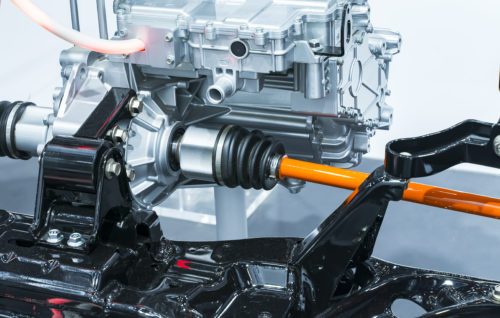Intro to Low-Cycle Fatigue Testing for Electric Motors
Regarding material and machine components, the term “fatigue” refers to cracking or fracturing in an object caused by stresses that are within its operational envelop, and often within its elastic range. These cracks and fractures grow, and they can eventually lead to a failure of the component and damage or destruction to the greater assembly if left untreated.
Fatigue testing is a testing procedure used to determine the fatigue strength and life of a component. It is commonly utilized to identify potential areas of concern in a design. Test operations can be classified into two categories: low-cycle and high-cycle (LCF and HCF). The former involves subjecting the component to the fluctuating loads, typically from the machine’s operational cycles, while the latter involves subjecting the component to higher frequency, typically from a vibratory load related to structural resonance.
Why Is Low-Cycle Fatigue Testing Important?
High-speed rotating components (e.g., centrifuges, engine rotors, fans, impellers, etc.) regularly experience stresses that can lead to fatigue damage and, eventually, a failure. Since failure can damage equipment and endanger operators, it is vital to take measures to prevent it and, if that is impossible, mitigate the consequences.
Low-cycle fatigue testing (LCF) simulates the operational cycle of a machine. The LCF test is used to verify that a component is durable enough to withstand the use in the intended application over the intended duration of its operational life, so users can trust them and reliably operate the machine. Additionally, it could help manufacturers identify and resolve potential premature failure before the part or product goes into full production.
Low-Cycle Fatigue Testing Applications for Electric Motors
Nascent high-speed/high-performance electric motors, ones used in EVs, undergo low-cycle fatigue testing. These tests are necessary for a number of reasons, including:
- Testing new designs
- New materials
- Validating and tuning numerical models and component life prediction methods
In addition to electric motors, many other rotating components also undergo fatigue testing, such as:
- Centrifuge or compressor rotors
- Flywheels (including flywheels for energy storage)
- High-speed fans
- Industrial gas turbine rotors
- Jet engine rotors
- Rocket pumps
- Turbochargers
Advantages of Low-Cycle Fatigue Testing for Electric Motors

Low-Cycle Fatigue Testing Solutions From Test Devices by SCHENCK
Test Devices offers low-cycle fatigue spin testing services to customers working with high-speed rotating components in demanding applications. By choosing to work with us, you benefit from:
- Better Productivity: Our spin pits and test facility are designed to test through a component’s complete speed range and contain high-energy failures.
- Schedule: Our drive system offers the fastest acceleration and deceleration cycles for short testing schedules. Use of Test Devices’ patented Real-time Crack Detection System (RT_CDS) allows customers to expedite the schedule via reducing the need for interim inspections. Also, RT-CDS has proven its high dependability in halting the LCF test by detecting the onset of crack initiation before rotor failure, which saves customers from the need for time-consuming failure investigation work.
- Quality: Test Devices audits LCF cycle data to ensure the accuracy of the test and the integrity of the data. Our testing operation also conforms to AS9100 Aerospace standards.
To learn more about low-cycle fatigue testing or our testing capabilities, contact us today.


